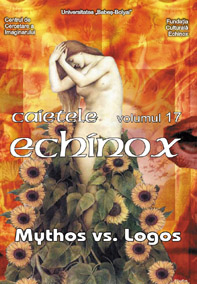Une figure antique du logos et du mythos : Le labyrinthe
An Ancient Figure of Logos and of Mythos: The Labyrinth
Author(s): Laurence GosserezSubject(s): Philosophy
Published by: Universitatea Babeş-Bolyai
Keywords: Greek Mythology; Labyrinth; Logos; Mythos; Dance of Cranes; Invention.
Summary/Abstract: In Antiquity, the labyrinth was not always regarded as a symbol of inextricable error. It was often seen as an ordeal, as a solar and initiatory path. In the voyage of Theseus and the dance of the cranes, it extolled the values of Greek Athenian civilization. In Rome, during the reign of Augustus, the labyrinthine symbol reappeared in the epic of Aeneas, in the myth founding the city, and was integrated into the ritual of the Play of Troy: this Roman version of the dance of cranes, celebrated civic solidarity and the republican system of government, according to a little studied text belonging to Ambrose of Milan (Exameron, dies V, VIII, 50-52). Ariadne’s thread, which reproduces the coils of the labyrinth, is closely related to the symbol of weaving, which is an ancient metaphor of life, of political art and of creation. In fact, ancient culture contains labyrinths of failure and labyrinths of success: on the one hand, tragedy, and on the other hand, the epic. In the myths of Oedipus, Hercules, and Minos, the motif of the crossroads (a metonym of the labyrinth) is an emblematic example of choice and illustrates the philosophical fortune of this symbol. The latter does not underlie only one ethical reflection on the use of knowledge and power, on freedom and justice; it also includes an epistemological dimension related to the methodology of invention and the process which governs progress. The labyrinth ultimately appears a specular archetype of creative thought. It reflects the dynamic polarity of logos and mythos, revealing their patterns of renewal inside Western culture. More recently, under the influence of rationalism and classicism, the labyrinth was perceived as an exclusively negative image of error.
Journal: Caietele Echinox
- Issue Year: 2009
- Issue No: 17
- Page Range: 236-252
- Page Count: 17
- Language: French
- Content File-PDF

